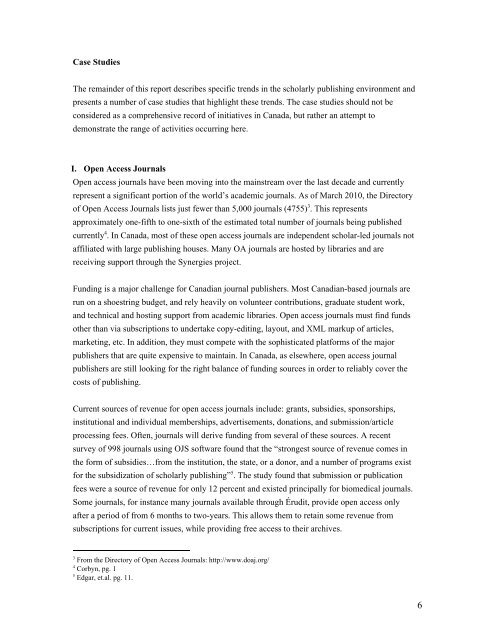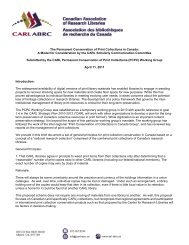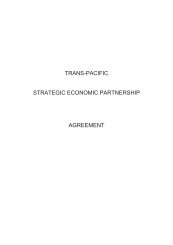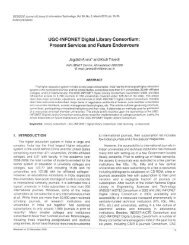PDF - CARL - ABRC
PDF - CARL - ABRC
PDF - CARL - ABRC
Create successful ePaper yourself
Turn your PDF publications into a flip-book with our unique Google optimized e-Paper software.
Case Studies<br />
The remainder of this report describes specific trends in the scholarly publishing environment and<br />
presents a number of case studies that highlight these trends. The case studies should not be<br />
considered as a comprehensive record of initiatives in Canada, but rather an attempt to<br />
demonstrate the range of activities occurring here.<br />
I. Open Access Journals<br />
Open access journals have been moving into the mainstream over the last decade and currently<br />
represent a significant portion of the world’s academic journals. As of March 2010, the Directory<br />
of Open Access Journals lists just fewer than 5,000 journals (4755) 3 . This represents<br />
approximately one-fifth to one-sixth of the estimated total number of journals being published<br />
currently 4 . In Canada, most of these open access journals are independent scholar-led journals not<br />
affiliated with large publishing houses. Many OA journals are hosted by libraries and are<br />
receiving support through the Synergies project.<br />
Funding is a major challenge for Canadian journal publishers. Most Canadian-based journals are<br />
run on a shoestring budget, and rely heavily on volunteer contributions, graduate student work,<br />
and technical and hosting support from academic libraries. Open access journals must find funds<br />
other than via subscriptions to undertake copy-editing, layout, and XML markup of articles,<br />
marketing, etc. In addition, they must compete with the sophisticated platforms of the major<br />
publishers that are quite expensive to maintain. In Canada, as elsewhere, open access journal<br />
publishers are still looking for the right balance of funding sources in order to reliably cover the<br />
costs of publishing.<br />
Current sources of revenue for open access journals include: grants, subsidies, sponsorships,<br />
institutional and individual memberships, advertisements, donations, and submission/article<br />
processing fees. Often, journals will derive funding from several of these sources. A recent<br />
survey of 998 journals using OJS software found that the “strongest source of revenue comes in<br />
the form of subsidies…from the institution, the state, or a donor, and a number of programs exist<br />
for the subsidization of scholarly publishing” 5 . The study found that submission or publication<br />
fees were a source of revenue for only 12 percent and existed principally for biomedical journals.<br />
Some journals, for instance many journals available through Érudit, provide open access only<br />
after a period of from 6 months to two-years. This allows them to retain some revenue from<br />
subscriptions for current issues, while providing free access to their archives.<br />
3<br />
From the Directory of Open Access Journals: http://www.doaj.org/<br />
4<br />
Corbyn, pg. 1<br />
5<br />
Edgar, et.al. pg. 11.<br />
6












